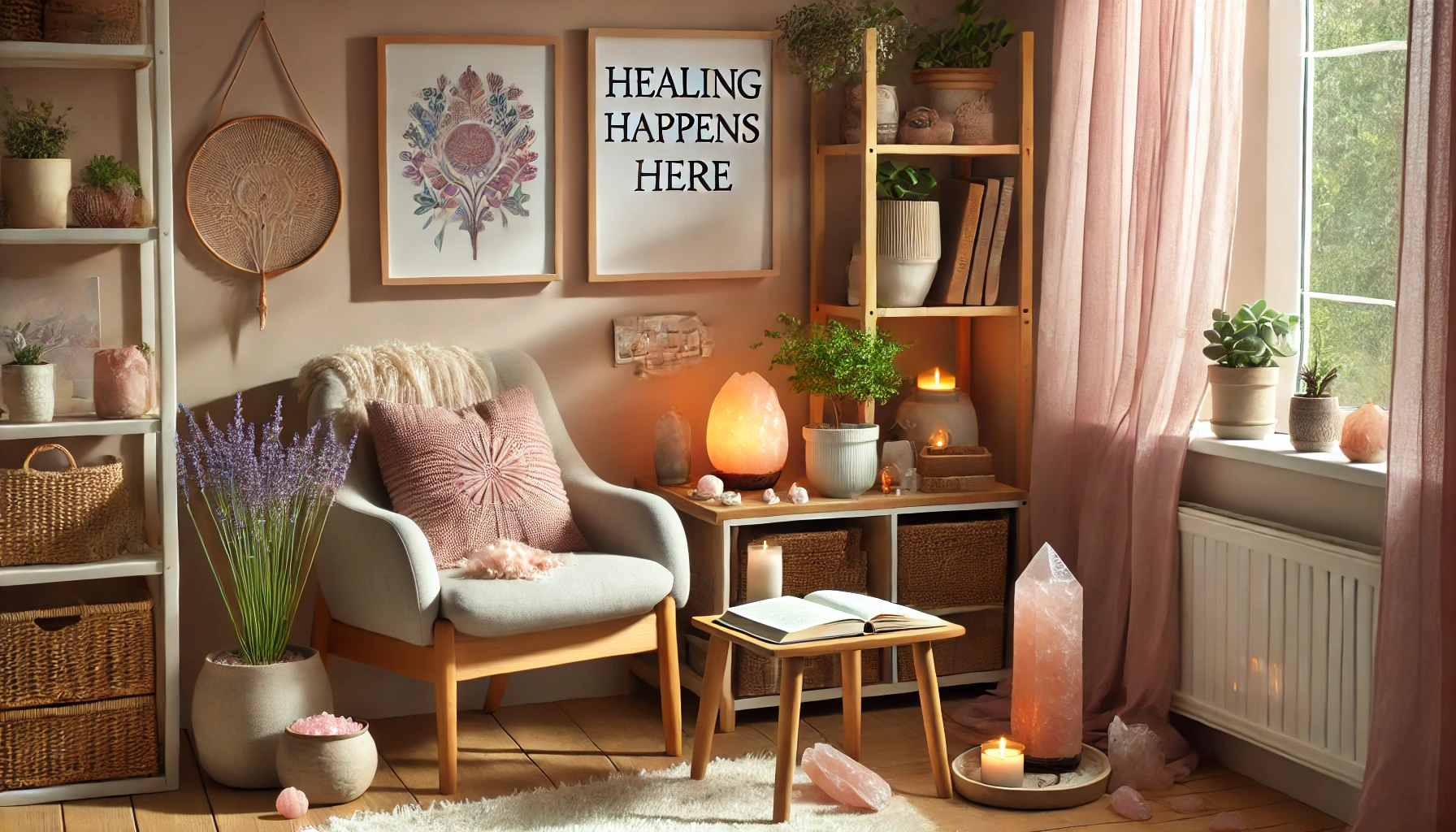Life naturally brings emotional highs and lows, and your home should be a place where you can process, release, and heal. Feng Shui offers gentle yet powerful tools to turn your space into a sanctuary—one that soothes your heart, calms your nervous system, and allows emotional wounds to mend. Whether you’re recovering from grief, burnout, anxiety, or emotional overwhelm, creating a healing environment can make all the difference.
Let’s explore how to use Feng Shui to support deep emotional restoration at home.
1. Identify a Healing Zone in Your Home
Designate a specific space that feels emotionally safe and soothing.
- It could be a reading nook, corner of your bedroom, or small meditation area
- Choose somewhere with soft lighting, quiet, and a sense of protection
- Avoid high-traffic areas or spaces associated with stress (like workspaces)
- Let this be your go-to zone when you’re feeling emotionally heavy
The space doesn’t need to be large—it needs to feel emotionally held.
2. Use Calming Colors to Soothe the Heart
Color impacts emotion more than most realize.
- Soft blues and greens ease anxiety and promote emotional flow
- Pale pinks and peach offer comfort, compassion, and emotional softness
- Lavender and soft purples encourage spiritual healing and inner peace
- Avoid harsh contrasts, neon colors, or stark whites in healing zones
Let the colors whisper calm to your nervous system.
3. Keep the Space Clear, Clean, and Breathable
Energetic healing requires spaciousness.
- Remove clutter, especially items that trigger painful memories
- Keep surfaces clean and open—less is more in emotional spaces
- Use soft textiles, like cotton or fleece throws, to add gentle weight
- Open windows daily to release stagnant air and invite renewal
Space for air = space for emotional release.
4. Use Gentle Light and Shadow to Support Emotional Depth
Lighting can either soothe or stimulate.
- Use warm, diffused lighting—avoid harsh overhead lights
- Add candles or salt lamps for a comforting glow
- Let natural light filter in softly, using sheer curtains if needed
- Use dimmer switches or soft table lamps in the evening
Gentle lighting mirrors the inner landscape of emotional healing.
5. Incorporate Symbols of Healing and Support
Your space should feel emotionally intelligent.
- Display objects that represent recovery, such as a stone, photo, flower, or spiritual icon
- Add a framed affirmation or quote that offers comfort and resilience
- Include items that connect you to ancestors, guides, or loved ones
- Avoid overly sentimental or triggering items—use discernment
Choose symbols that speak softly and affirm gently.
6. Bring in Nature to Support Emotional Processing
Nature reminds us that everything moves in cycles.
- Use plants that are easy to care for, like peace lily, snake plant, or aloe
- Include wood, stone, or water elements to balance emotions
- Add nature images or landscape art (forest, ocean, mountains, sky)
- Consider using fresh flowers or herbs to lift the heart
Natural textures and life forms ground and nourish emotional energy.
7. Create a Ritual Corner or Restorative Altar
Anchor healing with intention and consistency.
- Place a tray or shelf with healing objects:
- Candle or incense
- Comforting crystal (like rose quartz, amethyst, or lepidolite)
- Journal or emotional release notebook
- Cup of tea or herbal remedy
- Visit the corner daily for a moment of reflection, prayer, or breathing
Let this ritual space become a tool of emotional self-honoring.
8. Use Scent to Calm and Uplift
Smell has a direct line to your emotional brain.
- Diffuse or apply essential oils like lavender, rose, neroli, bergamot, or frankincense
- Light natural incense or resin like myrrh or copal
- Use scented sachets or linen sprays on pillows and blankets
- Choose gentle, clean, and heart-centered aromas
Let scent become a soft carrier of comfort.
9. Add a Sound Element for Emotional Release
Sound can shift stagnant emotion and quiet mental noise.
- Play gentle music, nature sounds, or ambient tracks in the background
- Use singing bowls, chimes, or bells to refresh the space energetically
- Keep a playlist of emotionally supportive songs ready for hard days
- Avoid loud, chaotic, or emotionally heavy music in your healing zone
Sound should hold, not overwhelm.
10. Keep Technology Out or Under Control
Tech can overstimulate and interfere with emotional presence.
- Keep phones, laptops, or TVs out of your healing space
- If music or meditations are streamed, hide the device after starting
- Use analog tools when possible—books, candles, tea, pen and paper
- Allow space for stillness and non-digital introspection
Silence supports emotional spaciousness.
11. Use Affirmations and Gentle Reminders
The words in your space shape your emotional reality.
- Frame or post affirmations like:
- “I am safe to feel.”
- “Healing happens here.”
- “Everything is unfolding in perfect time.”
- Place them in low-key areas: bathroom mirror, bookshelf, beside your bed
- Speak them out loud during your healing rituals
Let your home echo healing messages.
12. Refresh the Energy as You Evolve
Healing is not a one-time event—it’s a process.
- Smudge with sage or play sound regularly to clear lingering sadness
- Swap out objects as you grow—what once served may no longer feel aligned
- Replace wilted plants, burned-out candles, or used-up items promptly
- Let the space change with you—it’s a living mirror of your healing journey
Make space for your present self—not your past pain.
Final Thoughts: Your Home as a Healing Partner
Emotional healing is a sacred journey—and your home can walk that path with you. By using Feng Shui to hold you in compassion, presence, and softness, you create an energetic environment that speaks to your soul.
Let every detail affirm that you are worthy of rest, release, and renewal. Healing isn’t something you force—it’s something you allow. Begin with space. Begin with love.
